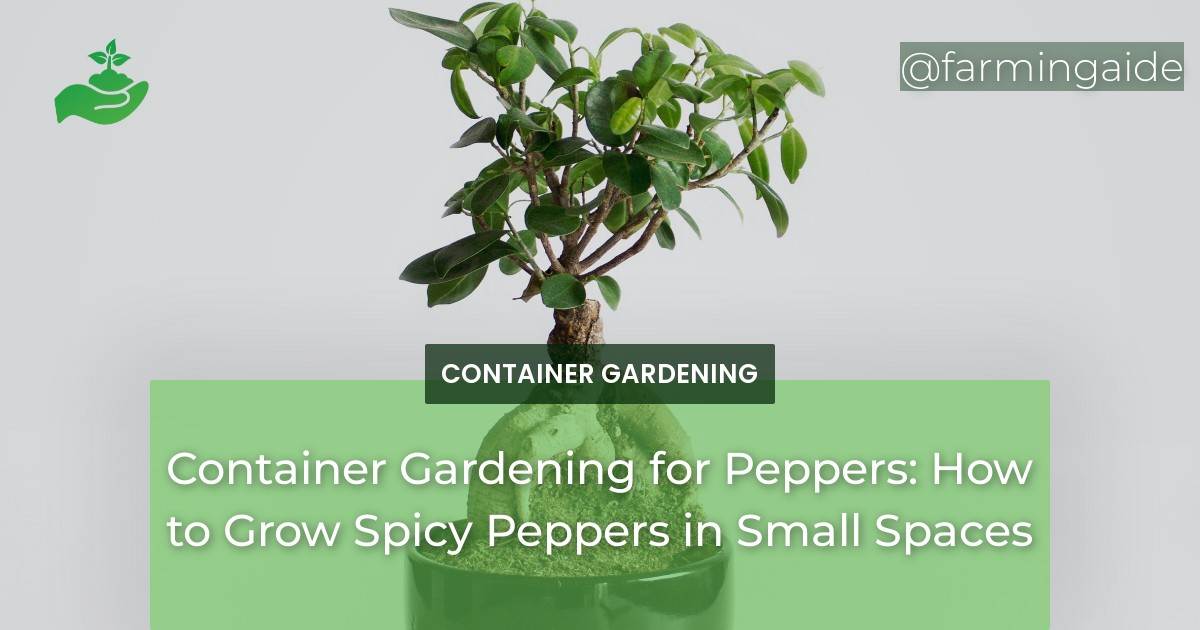Container gardening has become increasingly popular in recent years, especially for those living in urban areas with limited space. It offers a convenient and versatile way to grow a variety of plants, including the beloved spicy peppers. In this article, we will delve into the world of container gardening for peppers, exploring the best varieties, planting ideas, maintenance tips, and more. Whether you’re a seasoned gardener or just starting out, this comprehensive guide will provide you with all the necessary information to successfully grow spicy peppers in small spaces.
Best Peppers for Container Gardening
Not all peppers are created equal when it comes to container gardening. Some varieties are better suited for limited space and require less maintenance, making them ideal for growing in containers. When selecting peppers for container gardening, look for compact growth, high yield, and disease resistance. Here are some suggested varieties to consider:
- Cayenne peppers – known for their spicy kick and compact growth
- Jalapeno peppers – a popular choice for their versatility and high yield
- Banana peppers – mild and easy to grow, perfect for beginners
- Thai peppers – small and hot, great for adding a punch of heat to dishes
Container Planting Ideas
One of the great things about container gardening is the ability to get creative with your planting ideas. Here are some space-saving options for growing peppers in containers:
- Hanging baskets – perfect for smaller spaces, these allow you to grow peppers vertically
- Vertical gardens – using trellises or stacked containers, you can grow multiple plants in a small area
- Window boxes – ideal for growing peppers on a balcony or windowsill
When choosing containers for your peppers, make sure they have proper drainage and are large enough to accommodate the plant’s root system. Plastic, ceramic, and clay pots are all suitable options.
Companion planting is also beneficial for container-grown peppers. Consider planting herbs like basil and oregano alongside your peppers to help repel pests and improve flavor.
Container Preparation and Planting
Before planting your peppers in containers, it’s important to prepare the containers and soil properly. Here’s a step-by-step guide:
- Choose a container with drainage holes and fill it with a well-draining potting mix.
- Transplant your pepper seedlings into the container, making sure to bury them deep enough to cover the root ball.
- Water the soil thoroughly and place the container in a sunny location.
Peppers should be planted in containers during the spring or early summer, when the weather is warm and there is no risk of frost. They require at least 6-8 hours of sunlight per day and regular watering to thrive.
Soil Management and Composting
Using quality soil is crucial for the success of container gardening. Make sure to choose a potting mix that is specifically formulated for container plants and has good drainage. You can also add compost to your soil to improve its fertility and provide essential nutrients for your peppers.
Creating a composting system for ongoing soil fertility is also recommended for container gardening. This can be done by collecting kitchen scraps and yard waste and turning them into nutrient-rich compost for your plants.
When it comes to pest and disease control, opt for organic methods to avoid harmful chemicals. Neem oil, insecticidal soap, and companion planting are all effective ways to keep pests at bay.
Sustainable Gardening Practices
In addition to using organic pest control methods, there are other sustainable practices you can implement in your container gardening. These include using rainwater for watering your plants, avoiding chemical fertilizers, and using natural mulch to retain moisture and suppress weeds.
Not only are these practices better for the environment, but they also promote healthier and more flavorful peppers for you to enjoy.
Seasonal Planning and Crop Rotation
Proper planning and crop rotation are essential for maintaining healthy plants in container gardening. Consider the climate and season when selecting which peppers to grow, and rotate your crops every year to prevent soil depletion and pest infestations.
ALSO READ
Container Maintenance
To keep your container-grown peppers healthy and productive, regular maintenance is necessary. Here are some essential care tips:
- Water your peppers regularly, making sure not to over or under-water.
- Fertilize your plants every 2-3 weeks with a balanced fertilizer.
- Prune your plants to promote growth and prevent overcrowding.
Common issues in container gardening include over or under-watering, pest infestations, and nutrient deficiencies. Keep an eye out for these problems and address them promptly to ensure the health of your peppers.
During colder months, it’s important to winterize and store your container-grown peppers properly. This can be done by bringing them indoors or covering them with a frost cloth to protect them from freezing temperatures.
Can I Use the Same Container Gardening Techniques for Growing Sweet Peppers as I Would for Spicy Peppers?
Yes, you can absolutely grow sweet peppers in containers using the same techniques as you would for spicy peppers. The key is to provide enough sunlight, water, and fertilizer while ensuring proper drainage. Choose a large enough container and plant your sweet pepper seeds or seedling, and you’re all set.
Conclusion
Container gardening for peppers is a fantastic option for those with limited space. With the right varieties, planting ideas, and maintenance techniques, you can enjoy a bountiful harvest of spicy peppers right from your own home. Remember to always use sustainable and eco-friendly practices for a healthier and more environmentally-friendly garden. Now, it’s time to get your hands dirty and start growing some delicious and fiery peppers in your own containers!
RELATED ARTICLES:


